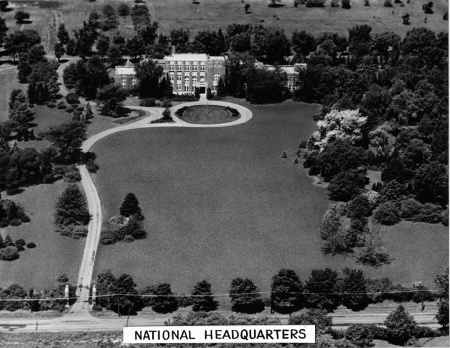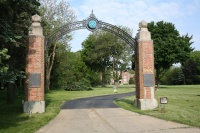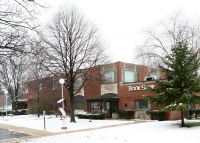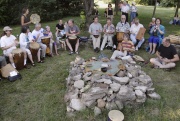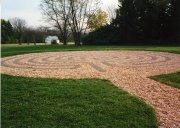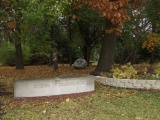Olcott (campus)
Olcott is the headquarters estate of the Theosophical Society in America, located in Wheaton, Illinois. It comprises about 41 acres (16.6 hectares) of land, with offices and library in the L. W. Rogers Building; the Quest Bookshop and the Theosophical Publishing House in the Joy Mills Building; warehouse, garages, and maintenance buildings; and houses occupied by employees.
These are general tours of the campus and its history,
- The Theosophical Society in America: A Brief Tour, a video recording.
- Olcott in Wheaton, an e-book published in May 2012 by Theosophy Forward Electronic Editions.
- The Olcott Campus by Susan Ohlhaber
Purchase of original acreage
President L. W. Rogers of the American Theosophical Society, now known as the Theosophical Society in America, initiated a search for a permanent headquarters location. The Society had outgrown its Chicago building. Mr. Rogers sought a new site that was centrally located - that is, within 500 miles of Chicago; near excellent rail transportation; with inexpensive land available in an attractive rural setting. The search was well publicized. Society members wrote to propose locations, and local officials from across the Midwest offered sites. National Secretary Kay Campbell found land in Wheaton that fulfilled all the requirements, and early in 1925 the Society purchased almost 10 acres (4 hectares) of farmland on North Main Street. The original acreage is shown in the aerial photograph above.
No mortgage was ever necessary to purchase land or finance construction. L. W. Rogers and his successor Sidney A. Cook worked out a plan for members to lend money in exchange for interest-bearing bonds, even through the difficult years of the Great Depression. Many of the paid-off bonds were burned in a joyful ceremony at the 1938 summer convention, and the final debt was eliminated in 1944.[1]
Over the years, many Society members bought parcels of land adjoining the estate, and donated them to expand the headquarters estate to its current dimensions.
Landscaping in 1920s and 1930s
When purchased, the land was plowed a farm field. The first priority of members was to establish a grove of trees, so on May 8, 1925, Kay Campbell and several others planted the first tree, a silver linden. within a few weeks, dozens of trees were planted. A small cabin was built for the caretaker, who started to work on a water feature to take advantage of the stream of water that ran across the middle of the acreage. Members nationwide donated money and plants to create a park-like atmosphere at their new headquarters, and followed progress monthly in The Messenger and The Theosophical Messenger.
L. W. Rogers Building
The L. W. Rogers Building was constructed in 1926-1927. From that time it has housed the Society's administrative offices, national library, and public programming.
Entrance arch
At the summer convention in 1940, a new structure was unveiled for members in a Co-Masonic dedication ceremony. An archway was installed at the Main Street entrance to the campus. It was designed by Theosophist Claude Bragdon, an architect, artist, writer, and editor from New York. The cost of the project was underwritten anonymously by a member from Portland, Oregon, later acknowledged to be John H. Mason.
Two stone and brick support columns are topped by carved Platonic solids - a dodecahedron and an icosahedron. Between them is a wrought iron arch with the name of the Theosophical Society in America and the TS emblem in the center. Originally a lighted lantern hung from the emblem, but it had to be removed in later years when vehicles became taller.
In 19__, the entire gateway had to be moved a few feet to accommodate a turn lane in Main Street, when an apartment complex was built across the street.
Perkins Pond
Joy Mills Building
Youth Circle
Labyrinth
Garden of Remembrance
Other resources
Notes
- ↑ Janet Kerschner, "When We Burned the Bonds," Quest 95.5 (September-October, 2007). Available at TSA website.
